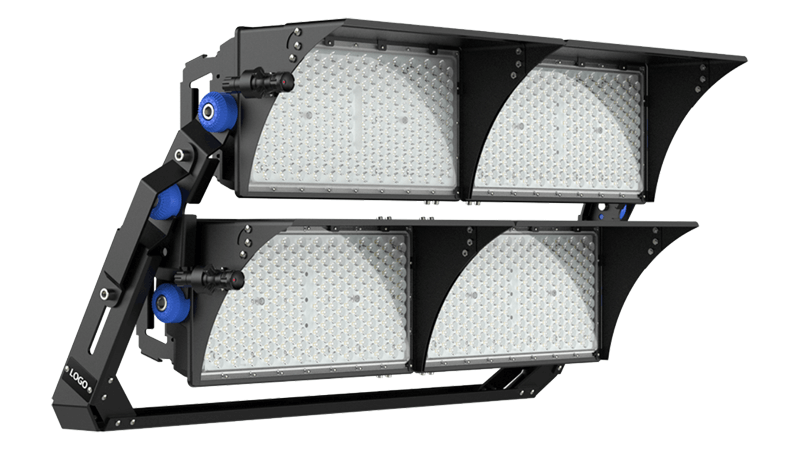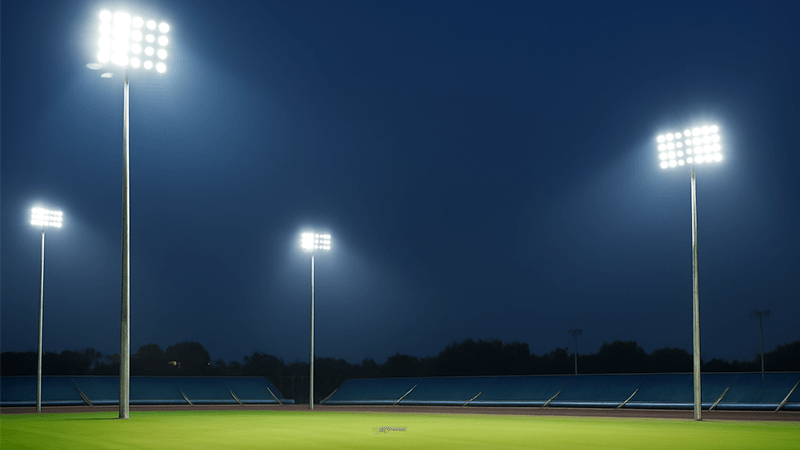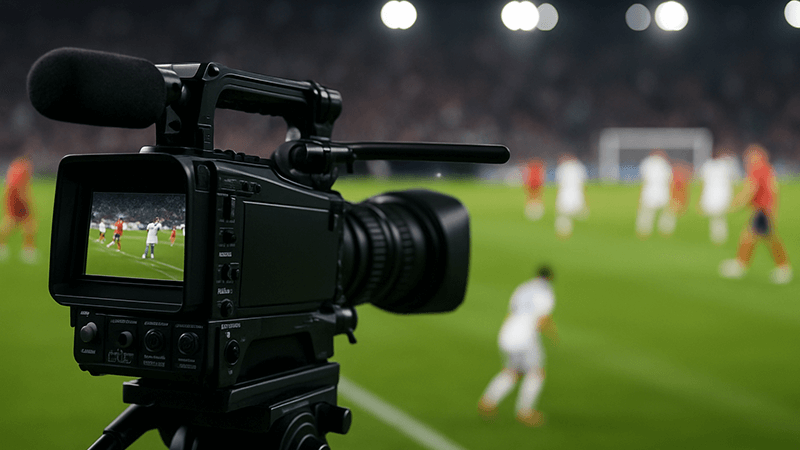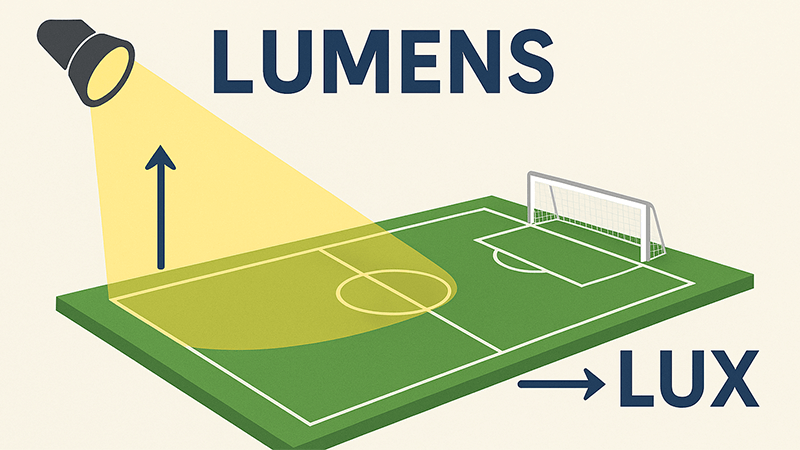Struggling with high energy bills and poor lighting at your sports complex? These issues hurt your budget and player experience, making facility management a constant headache.
LED floodlights are the best choice for sports complexes because they offer massive energy savings, longer lifespans, and superior light quality. They provide bright, uniform illumination, reduce maintenance costs, and improve safety and performance for athletes, making them a smart long-term investment.

When I started in the lighting industry, I saw firsthand how much energy traditional sports lighting wasted. The switch to LED technology was a complete game-changer for facilities worldwide. But making the right choice involves more than just picking a bright light; you need to understand the specifics to get the best results for your project. Let’s dig into the key questions that purchasing managers like Shaz often ask me to ensure you make an informed decision.
What Wattage Are Sports Lights?
Confused about how much power your sports lights need? Choosing the wrong wattage can lead to poor visibility or massive energy waste, creating frustrating problems for everyone involved.
Sports light wattage varies widely, from 400W to over 2000W. The right choice depends on the sport, competition level, and field size. For example, a local tennis court might use 400W-600W lights, while a large football stadium needs 1000W-2000W fixtures for professional play.

Dive Deeper
When you’re sourcing lights, it’s easy to get caught up in comparing wattage numbers. But wattage only tells you how much power a light consumes, not how much light it produces. The real metric for efficiency is luminous efficacy, measured in lumens per watt (lm/W). A modern 1000W LED floodlight from my factory can easily replace an old, inefficient 2000W metal halide fixture while providing better quality light. This cuts energy consumption in half instantly.
Wattage vs. Efficacy: What Really Matters?
As a purchasing professional, you know that comparing specs is key. But look beyond just the wattage. A fixture with high efficacy (e.g., 160 lm/W) will give you more light for less energy than one with lower efficacy (e.g., 120 lm/W). This translates directly into lower electricity bills over the lifespan of the lights. Always ask your supplier for the luminous efficacy data sheet to make a true cost-benefit analysis.
Customizing Lighting for Uniformity
Here is the most important insight I can share: not every part of a sports field needs the same type of light. My key insight is that achieving perfect illumination uniformity requires a mix of different light distributions. Based on the pole locations, mounting height, and the distance to the target area, we use a combination of fixtures with different beam angles—like narrow, medium, and wide beams. We use lighting design software like DIALux to simulate the outcome. This ensures the center of the field is just as bright as the corners, eliminating dark spots and glare.
This table gives a general idea of wattage needs, but a custom lighting design is always best.
| Application Area |
Competition Level |
Typical LED Wattage Range |
| Tennis Court (Single) |
Recreational |
400W – 600W |
| Basketball Court |
High School |
500W – 800W |
| Football/Soccer Field |
Professional |
1000W – 1500W |
| Large Stadium |
International |
1200W – 2000W+ |
This strategic approach is how we deliver top-tier lighting solutions that meet strict standards while maximizing energy efficiency.
What Are Sports Lights Called?
Unsure of the correct terms for sports lighting? This confusion can lead to ordering mistakes and project delays, wasting both your time and your money during procurement.
Sports lights are most commonly called LED sports floodlights or simply stadium lights. You may also hear terms like high-mast lighting, arena lights, or sports lighters. The specific name often depends on the application, such as "tennis court lights" or "football field lights."

Dive Deeper
Using the right language is critical when communicating with manufacturers and suppliers. As a purchasing manager, precise terminology ensures you get exactly what your project needs without costly misunderstandings. Let’s break down the common terms so you can source with confidence.
Floodlights vs. Spotlights: The Key Difference
The term "floodlight" is the most accurate general name. It refers to a light that produces a broad beam to "flood" an area with light. In contrast, a "spotlight" produces a very narrow, concentrated beam. While it sounds like you might want spotlights for long distances, modern sports lighting systems actually use a combination of different beam angles within the "floodlight" category to achieve both reach and coverage. So, when you need to light a stadium, you are looking for a system of sports floodlights with varied optics.
Understanding High-Mast Lighting
You will often hear the term "high-mast lighting." This refers to the entire lighting system used for large, outdoor areas, not just the light fixture itself. It includes the tall poles (masts), the mounting brackets, and the luminaires (the lights). When a project requires lighting a large area like a seaport, airport apron, or a multi-field sports complex, you are procuring a high-mast lighting solution. I remember a client who kept asking for ‘spotlights’ for a football field. After a discussion, we clarified that what he really needed was a high-mast system with a mix of narrow and wide-beam floodlights to get the required uniformity. This simple clarification saved weeks of back-and-forth.
Why Terminology Matters for Procurement
Knowing these terms helps you create clear and effective requests for quotations (RFQs). It helps you compare offers accurately and ensures suppliers are bidding on the same type of product.
| Term |
Definition |
Best Used For |
| Sports Floodlight |
A high-power luminaire with a specific beam angle designed for sports areas. |
General term for any sports application. |
| Stadium Light |
A very high-power floodlight designed for large stadiums and arenas. |
Professional football, baseball, or cricket stadiums. |
| High-Mast Light |
The complete system of poles and luminaires for lighting large outdoor areas. |
Discussing the entire infrastructure for a project. |
| Arena Light |
High-power lights, often used indoors for basketball, hockey, or concerts. |
Indoor venues, often with specific broadcasting requirements. |
Using precise language makes you a more effective buyer and ensures your project runs smoothly from sourcing to installation.
What Kind of LED Lighting is Best for Sports Broadcasting?
Worried about camera flicker ruining your sports broadcast? Poor lighting quality can make slow-motion replays look terrible and frustrate viewers, damaging your venue’s reputation on screen.
For sports broadcasting, you need high-CRI (Color Rendering Index) and flicker-free LED sports lights. A high CRI (above 80, ideally 90+) ensures true-to-life colors, while flicker-free technology is essential for clear slow-motion and super slow-motion replays on HDTV cameras.

Dive Deeper
When a stadium is built or upgraded for television broadcasting, the lighting requirements become much stricter. The human eye is very forgiving, but a high-definition camera is not. I’ve worked on many projects where broadcast quality was the number one priority. Getting it right comes down to a few key technical specifications that you must demand from your supplier.
The Importance of Color Rendering Index (CRI)
Color Rendering Index (CRI) measures how accurately a light source shows the true colors of an object compared to natural sunlight. For broadcasting, a high CRI is non-negotiable. A low CRI (below 70) will make team jerseys look dull, the grass appear unnatural, and skin tones look washed out. For any professional broadcast, you should specify a CRI of 80 or higher. For top-tier international events, a CRI of 90+ is the standard. This ensures that the vibrant colors seen in the stadium are the same ones viewers see at home.
Eliminating Flicker for Slow-Motion Replays
Flicker is a rapid pulse in light output. While often invisible to the naked eye, it creates horrible banding and strobing effects in slow-motion video replays. This is unacceptable for modern sports broadcasting. We solve this by using high-quality drivers in our LED fixtures. These drivers provide a constant current to the LEDs, resulting in a smooth, continuous light output that is "flicker-free" even under the scrutiny of super slow-motion cameras operating at thousands of frames per second. Always ensure your supplier can guarantee a low flicker rate suitable for HDTV broadcasting.
TLCI: The Gold Standard for Television
While CRI is a good general measure, the Television Lighting Consistency Index (TLCI) is a more specific standard developed for the broadcast industry. It measures how a light source will perform on camera. A TLCI score above 90 is considered excellent for broadcasting, as it means minimal color correction will be needed in post-production.
| Feature |
Poor for Broadcast (Standard LED) |
Excellent for Broadcast (Professional Sports LED) |
| CRI |
< 75 |
> 90 |
| TLCI |
< 80 |
> 90 |
| Flicker |
Noticeable in slow-motion |
Flicker-free up to 20,000 fps |
| Performance |
Washed-out colors, distracting bands |
Vibrant, true colors, and clean replays |
For a purchasing manager like Shaz, specifying these broadcast-level requirements is crucial when sourcing for a venue that will be on television.
How Many Lumens Does a Stadium Floodlight Need?
Think buying the highest-lumen light is the answer? This common mistake can lead to uneven lighting and terrible glare, wasting money on a system that doesn’t work.
A single LED stadium floodlight can produce anywhere from 60,000 to over 200,000 lumens. However, the total lumens needed for a whole stadium is more important and can reach millions, calculated based on the required lux level (lumens per square meter) for the sport.

Dive Deeper
This is one of the biggest points of confusion I see in the industry. Clients often ask for the "highest lumen" fixture, thinking that more lumens automatically means better light. But the total lumen count of a fixture is only one part of the equation. How that light is controlled and distributed across the field is far more important.
Lumens vs. Lux: What’s the Difference?
It’s a simple but critical distinction. Lumens measure the total amount of light a fixture emits in all directions. Lux measures the amount of light that actually lands on a specific surface area (like the playing field). Think of it this way: lumens are the total water coming out of a spray-head. Lux is the amount of water hitting a single plant. You could have a very high-lumen fixture, but if it has the wrong optics, it might create a bright spot directly below and leave the corners of the field dark. The goal is not just brightness (high lux), but uniformity (even lux across the entire surface).
The Role of Optical Lenses and Beam Angles
This brings us back to my core insight: the magic is in the optics. We don’t use a one-size-fits-all floodlight. Instead, we use advanced optical lenses to shape the light into precise beam angles—narrow beams to reach the far side of the field, medium beams for the middle areas, and wide beams to cover the areas near the poles. I always tell my clients, "Don’t get hung up on the lumen number of one light. Give us your field layout, pole heights, and the lux level you need to achieve." Our engineers then use DIALux software to create a complete lighting simulation. This plan tells us exactly which combination of beam angles to use and where to aim each fixture to guarantee perfect uniformity and minimal glare.
Calculating Total Lighting for Your Project
The correct approach is to start with the required lux level for your sport and level of play. This is the target. From there, a lighting designer can calculate the total lumens needed and, more importantly, the right combination of fixtures to deliver that light effectively.
| Sport |
Competition Level |
Recommended Average Horizontal Lux |
| Soccer/Football |
Recreational / Training |
200 lux |
| Soccer/Football |
Professional / TV |
> 1000 lux |
| Tennis |
Club Level |
300 lux |
| Tennis |
International (TV) |
> 1000 lux |
Ultimately, for a successful project, you must partner with a manufacturer who provides comprehensive lighting design services, not just hardware.
Conclusion
Choosing the right LED floodlights saves energy, improves safety, and delivers professional results. By focusing on smart design over simple specs, you ensure a winning investment for your sports complex.